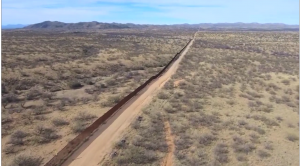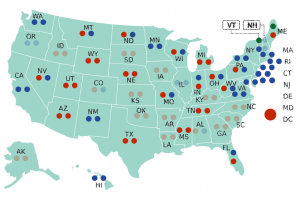By Tessa Muggeridge
Cronkite News Service
PHOENIX – Decennial census data released Thursday confirmed that Arizona’s population has grown by nearly every measure, but experts said they expected to see even higher rates of growth.
The Great Recession and controversy over SB 1070 and other state action against illegal immigrants could be the reason, those experts said.
Arizona’s population as of April 1, 2010, was 6.39 million, a 24.6 percent increase from 2000, but U.S. Census Bureau predictions placed the population 4 percent higher — the largest such disparity in the nation.
The Hispanic population in the state soared, reaching 29.65 percent by 2010, up from 25.25 percent in 2000 and 18.78 percent in 1990.
William Frey, a demographer at the Brookings Institution in Washington, D.C., who specializes in census data and urban populations, said he expected to see a higher growth rate in Arizona among Hispanics and in general.
The Census Bureau’s over-prediction of Hispanics is likely why Arizona’s overall population fell below the estimates, he said. While immigration issues could have played a role, Frey said the economy was probably the bigger issue.
“Really the bulk of migration has to do with economics — are you going to have a job?” he said. “Maybe some people heard about the (immigration) laws and had second thoughts about moving to Arizona, but that was probably in the margins.”
The city of Phoenix reached 1.4 million residents, but the 9.4 percent increase from 2000 was less than half that predicted by the Census Bureau. In addition, Phoenix lost its spot as the nation’s fifth-largest city, falling behind Philadelphia.
Pinal County saw the largest percentage increase in the state, growing by 109.1 percent during the decade, while Maricopa, by far Arizona’s largest county, grew by 24.2 percent.
Every county grew except Greenlee, which saw a 1.3 percent decline.
Tom Rex, associate director of the Center for Competitiveness and Prosperity Research at Arizona State University’s W.P. Carey School of Business, said little, if any, growth occurred in the state over the last three years. That would mean it was the first time Arizona didn’t grow in decades, he said.
The recession and immigration debate hit Arizona at the same time, Rex said, but it’s hard to say which affected growth more.
“Our census came in quite below estimates, more than other neighboring states also in a recession,” Rex said. “The only conclusion I could reach was that the immigration laws seemed to have driven more people out because it couldn’t just be the economy.”
Jennifer Steen, a political science professor at ASU, said in making estimates, the Census Bureau had the difficult task of estimating how economic climate would affect Arizona. On top of that she said it’s hard to count illegal immigrants, which the census is supposed to include.
“Undocumented aliens in Arizona were under-counted at a very high rate,” she said. “It’s always hard to count those people in any context because they have a lot of reasons to be wary of identifying themselves to an agent of the United States government.”
During the data-collection period, discussion about SB 1070 was in full swing, likely meaning even fewer illegal immigrants were willing to participate, Steen said.
Gains in Pinal and Maricopa counties may affect the state’s Independent Redistricting Commission, which was just finalized this month, as it prepares to redraw Arizona’s legislative and congressional districts. The commission will add one congressional district before the 2012 election, bumping Arizona up to nine seats.
“The state legislative map will have to be re-jiggered significantly,” Steen said. “We’re going to see the new map of congressional districts is surely going to look quite different than the existing map.”
A large Hispanic population gain will eventually mean political shifts in the state, she said, but it won’t happen immediately, especially because rates of political participation by Hispanics are lower than non-Hispanics.
“Even when Hispanics constitute a majority of the population, they still won’t constitute a majority of the voting population,” Steen said.





